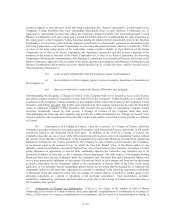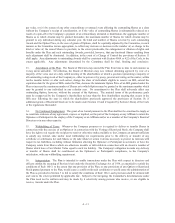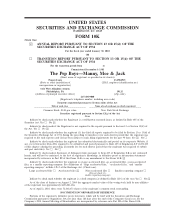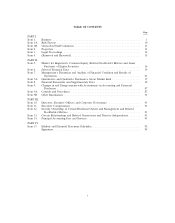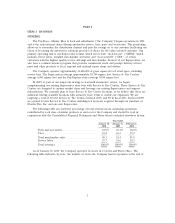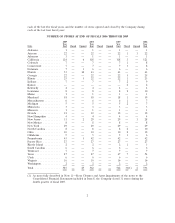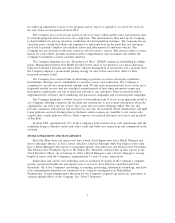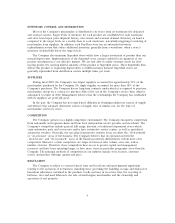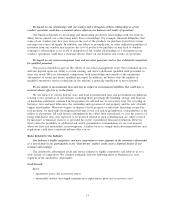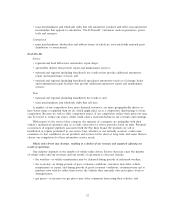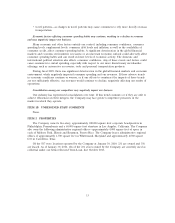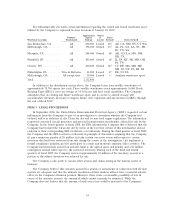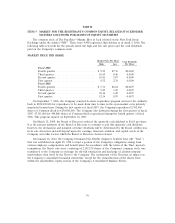Pep Boys 2009 Annual Report Download - page 64
Download and view the complete annual report
Please find page 64 of the 2009 Pep Boys annual report below. You can navigate through the pages in the report by either clicking on the pages listed below, or by using the keyword search tool below to find specific information within the annual report.INVENTORY CONTROL AND DISTRIBUTION
Most of the Company’s merchandise is distributed to its stores from its warehouses by dedicated
and contract carriers. Target levels of inventory for each product are established for each warehouse
and store based upon prior shipment history, sales trends and seasonal demand. Inventory on hand is
compared to the target levels on a weekly basis at each warehouse, potentially triggering re-ordering of
merchandise from suppliers. In addition, each Pep Boys store has an automated inventory
replenishment system that orders additional inventory, generally from a warehouse, when a store’s
inventory on-hand falls below the target levels.
The Company also maintains Superhub stores which have a larger assortment of product than our
normal Supercenter. Implementation of the Superhub store concept enabled local expansion of our
product assortment in a cost effective manner. We are now able to satisfy customer needs for slow
moving product by carrying limited amounts of this product at Superhub stores. These Superhubs then
deliver this product to requesting Supercenters to fulfill customer demand. Superhub stores are
generally replenished from distribution centers multiple times per week.
SUPPLIERS
During fiscal 2009, the Company’s ten largest suppliers accounted for approximately 52% of the
merchandise purchased by the Company. No single supplier accounted for more than 18% of the
Company’s purchases. The Company has no long-term contracts under which it is required to purchase
merchandise except for a contract to purchase bulk oil for use in the Company’s service bays, which is
anticipated to expire in 2010. Management believes that the relationships the Company has established
with its suppliers are generally good.
In the past, the Company has not experienced difficulty in obtaining satisfactory sources of supply
and believes that adequate alternative sources of supply exist, at similar cost, for the types of
merchandise sold in its stores.
COMPETITION
The Company operates in a highly competitive environment. The Company encounters competition
from nationwide and regional chains and from local independent service provides and merchants. The
Company’s competitors include general, full range, discount or traditional department stores which
carry automotive parts and accessories and/or have automotive service centers, as well as specialized
automotive retailers. Generally, the specialized automotive retailers focus on either the ‘‘do-it-yourself’’
or ‘‘do-it-for-me’’ areas of the business. The Company believes that its operation in both the
‘‘do-it-for-me’’ and ‘‘do-it-yourself’’ areas of the business positively differentiates it from most of its
competitors. However, certain competitors are larger in terms of sales volume, store size, and/or
number of stores. Therefore, these competitors have access to greater capital and management
resources and have been operating longer or have more stores in particular geographic areas than the
Company. The principal methods of competition in our industry include store location, customer
service and product offerings, quality and price.
REGULATION
The Company is subject to various federal, state and local laws and governmental regulations
relating to the operation of its business, including those governing the handling, storage and disposal of
hazardous substances contained in the products it sells and uses in its service bays, the recycling of
batteries, tires and used lubricants, the sale of small engine merchandise and the ownership and
operation of real property.
6


